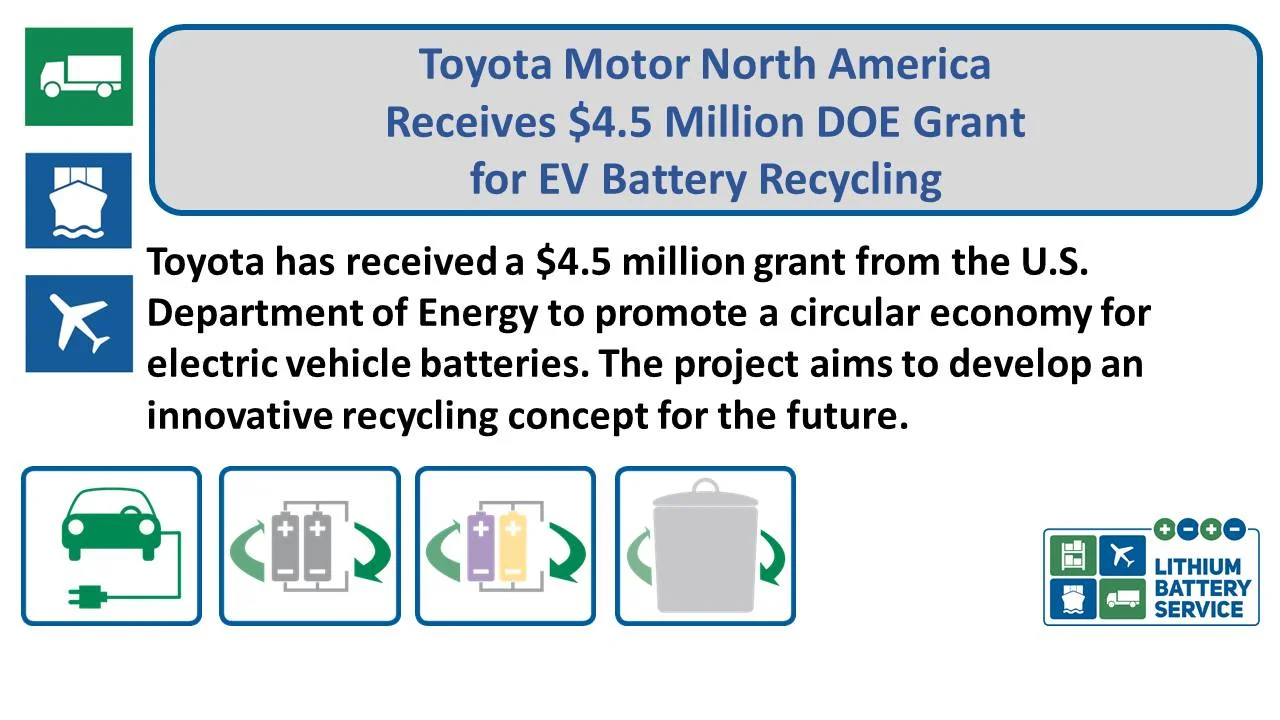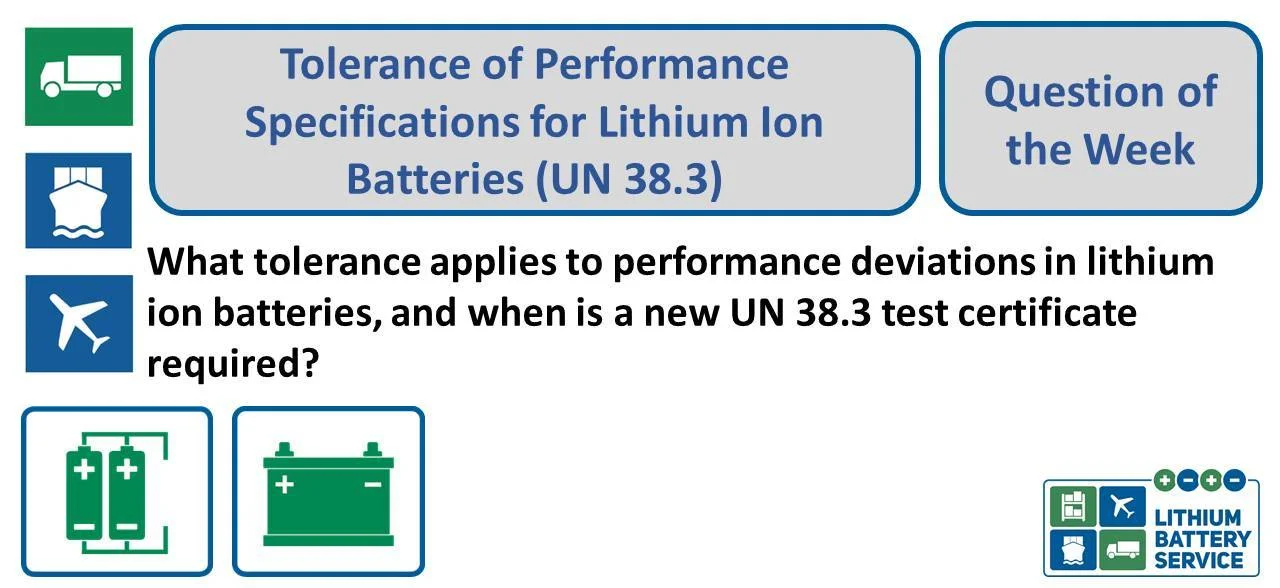The tradesperson rule also applies to safety-critical defective/damaged lithium cells and batteries

Dear Lithium Battery Service Customers,
Today, it's all about the "Handwerker-Regelung" (craftsmen regulation) and a clarification regarding our statement in the last newsletter.
Jürgen Werny and I had misinterpreted Mr. Depre's statement from 2021, which we included in the last newsletter. Now, Mr. Depre has kindly explained via email why critically defective lithium cells and batteries are excluded from the craftsmen regulation in his view.
At ABS, we never intended to imply that a lithium cell or battery that, for example, already shows clear physical damage or is excessively hot, would simply be transported under the craftsmen regulation.
However, it seemed reasonable to us that common sense, such as that of the service technician, is required here, as they cannot make an assessment based on the safety criteria of the cell/battery or product manufacturer. Additionally, it is unrealistic to consult a technical expert in such cases.
What can reasonably be expected from a service technician, however, is an assessment of whether the apparent defect or damage to the lithium cell or battery during transportation could lead to rapid disassembly, dangerous reactions, flames, dangerous heat development, or the release of toxic, corrosive, or flammable gases or vapors, as described in ADR SV 376.
A non-diagnosable lithium cell or battery without obvious damage or defects is probably the most challenging case for the person applying the craftsmen regulation.
If the service technician encounters a critically defective lithium cell or battery, it is unlikely for practical reasons that P 911 or LP 906 would be applied. Instead, depending on the nature of the emergency, a case-by-case decision will be made on the best course of action for occupational and environmental safety reasons.
It also happens that some cell/battery manufacturers wish to examine a fully reacted cell/battery in their laboratory, and in such cases, P 911 or LP 906 may be applied. This is especially the case when trying to determine whether the reaction was an isolated incident or an issue in series production. In such instances, the topic of warranty comes into play.
Here is Mr. Depre's statement explaining why critically defective lithium cells and batteries are excluded from the craftsmen regulation:
Start of forwarded message:
From: "Depre, Christian (StMB)"
Subject: AW: Classification of vehicle bodies
Date: March 7, 2025, 2:59 PM CET
To: Eva Glimsche
Dear Ms. Glimsche,
Regarding point 2 (applicability of the craftsmen regulation to safety-critical defective lithium cells and batteries) in your newsletter below, I would like to point out that the conclusion is incorrect. In my statement from September 20, 2021, only defective lithium batteries were mentioned; critically defective batteries were not the subject of the discussion. The underlying inquiry from Mr. Werny dated September 18, 2021, was solely about the transport of defective lithium batteries by service technicians after replacing batteries at a customer's site.
While the exemption under subsection 1.1.3.1(c) of the ADR means that the other ADR provisions do not apply, the conditions of the exemption itself must still be met. One of these conditions is that the maximum quantities according to subsection 1.1.3.6 ADR must not be exceeded. To determine the maximum quantities for critically defective lithium batteries, chapter 3.3 special provision 677 ADR must be considered, as it is the only provision that specifies the applicable transport category 0. Consequently, the maximum allowable total quantity according to subsection 1.1.3.6 ADR is also 0, making the exemption under subsection 1.1.3.1(c) ADR inapplicable. However, for non-critical defective batteries, the exemption is generally applicable.
I believe that this result is immediately understandable because it concerns lithium batteries that, according to special provision 376, may undergo rapid disassembly, dangerous reactions, flame formation, dangerous heat generation, or the release of toxic, corrosive, or flammable gases or vapors under normal transportation conditions. No reasonable person would voluntarily place such a battery in their car. I consider that implausible.
Please share this information promptly through your newsletter.
Best regards,
Christian Depre
+++++++
From: Depre, Christian (StMB)
Sent: Monday, 20 September 2021 10:17
To: Juergen.Werny
Subject: Re: Defective lithium batteries in the possession of private individuals and under the ‘craftsmen regulation’
Good morning, Mr Werny,
It would be extremely unrealistic to expect private individuals to comply with the complex
regulations for the transport of defective lithium batteries. The exemption under ADR 1.1.3.1 (a) is specifically intended intention of not criminalizing private individuals, who regularly have little or no knowledge of dangerous goods law, in their everyday transport activities.
It is inevitable that increasing electrification will lead to more and more
lithium batteries – including defective ones – being transported by private individuals.
In any case, it is socially desirable that defective batteries be
proper disposal and not disposed of with household waste, for example.
The risk associated with the transport required for this
must be accepted.
With regard to the transport of lithium batteries by service technicians, we have
discussed that the exemption
can be used for the transport of the new batteries to the customer in accordance with subsection 1.1.3.1 (c) ADR.
However, I don't remember whether we also discussed the
return transport of the defective batteries that have been replaced.
I didn't find anything about this in our previous e-mail exchange either.
However, it is beyond doubt in my mind that the return of the defective batteries should also be
context of the main activity of a service technician. The
exemption does not legally preclude its application in these cases
and that is what ultimately matters, not the purely subjective and sweeping
assertion of an allegedly unacceptable risk.
Kind regards,
Christian Depre
Bauoberrat












